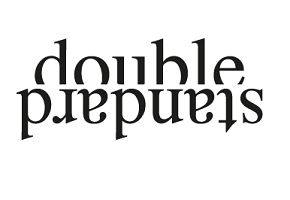
Over the last couple of years there has been a hue and cry about the lack of equality in pay and compensation for professional female athletes. This came to a head when the United States Women’s Soccer Team began a concerted series of activities to bring this to the public’s attention.
This series of activities culminated, in this writer’s view, with the presentation on the award-winning 60 Minutes programme on CBS television in the United States on 20 November 2016. The correspondent for this presentation was Norah O’Donnell and the following was stated in her opening remarks.
“Few teams have been as glorious on the soccer field as the United States Women’s National Team. They’ve won three World Cups, four Olympic gold medals, and set the standard in the most popular sport on the planet. But despite their achievements, the players say they have been discriminated against, paid less and treated worse, next to the US men’s team. Soccer may be known as the beautiful game, but the team has embarked on a bruising and historic legal fight for equality and their opponent is the US Soccer Federation, their own employer. For the players, it’s the match of their lives. They hope a victory will help close the gap, not just in sport, but in any job where women do the same work as men for less pay”.
No one denies that women who do the same work as men ought to be paid the same as men. That however, is not the end of the matter as far as sports are concerned. Sport is a huge mega-billion business. The real issue is not whether women do the same work as men, but whether women’s sports generally create the same value for owners, advertisers and media outlets.
In my view, although no national or international sporting body dares to say so, the issue is that as compensation is inextricably linked to the value created by the sport, and as a general rule, women’s sports creates less economic value, and as such they are paid less.
The economic model for professional sports is built around the quartet of media rights, advertising revenue, sales of branded products (from shirts to key rings and everything in-between) and gate receipts and income from stadia.
There are a few unassailable facts. More men watch sports than women. More men watch male sports than they do female sports. Men drink more than women. The last study I saw on this latter area was one entitled “ Gender and Alcohol Consumption: Patterns from the Multinational Genacis Project” by a team of researchers lead by Richard W Wilsnack and all but one team member from the University of North Dakota School of Medicine and Health Sciences in 2009. The study measured data from men and women in three age brackets 18-34; 35-49; 50-65. Amongst the many findings in this very detailed scientific study were:
- Drinking per se and high-volume drinking were consistently more prevalent among men than among women
- Among drinkers the prevalence of high-frequency drinking was consistently greatest among men in the 50-65 age group.
- Lifetime abstention was consistently more prevalent among women.
The study concluded that “men still exceed women in drinking and high-volume drinking”.
I have visited Premier League matches at Liverpool, Chelsea, Arsenal, and Crystal Palace (perish the thought of going to Old Trafford!). My observation is that men outnumbered women by a rate of more than 5 to 1. Similarly, I have been to NFL games in all the major US cities except Los Angeles and men have outnumbered women by at least a similar margin. At all of these games spirits were not sold but beer was sold. Go to any sports bar showing a Premier League or other world class football game or an NFL game, or an NBA game or a rugby game or world championship boxing and you will see more men than women.
The Super Bowl is the greatest one-day sporting spectacle in the world. Advertising rates are the highest during this block of time. The major products advertised are beer and motorcars. During the Super Bowl in February 2017 the cost per second for an advertisement was US$160,000.00. A standard 30 second ad cost US$5m. At the last Super Bowl Anheuser-Busch InBev held exclusive beer rights and showed ads for Budweiser, Bud Light, Busch, & Michelob Ultra.
I could go on and on. However, the simple point is that more men watch more male sports and drink more beer than women. This results in a business model being skewed towards male drinkers, which results in men being paid more than women in sports.
“Donkey seh de worl no level”. D.J. Swearinger Womens Jersey


